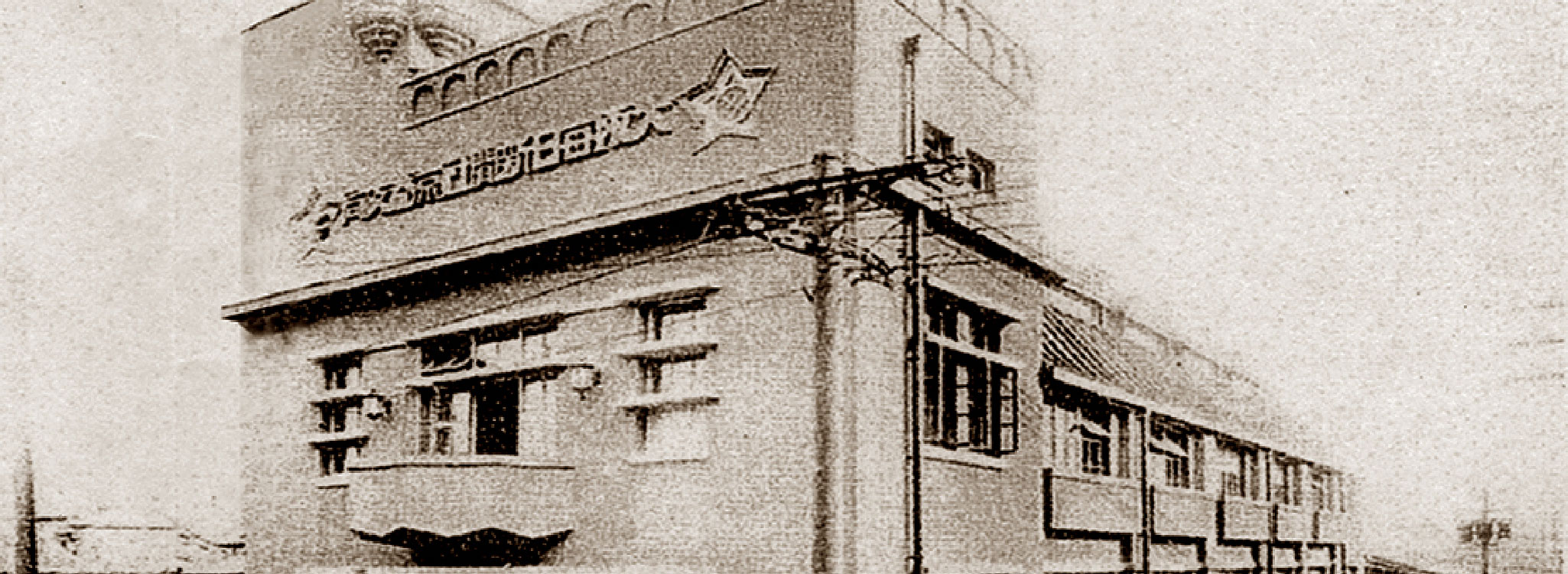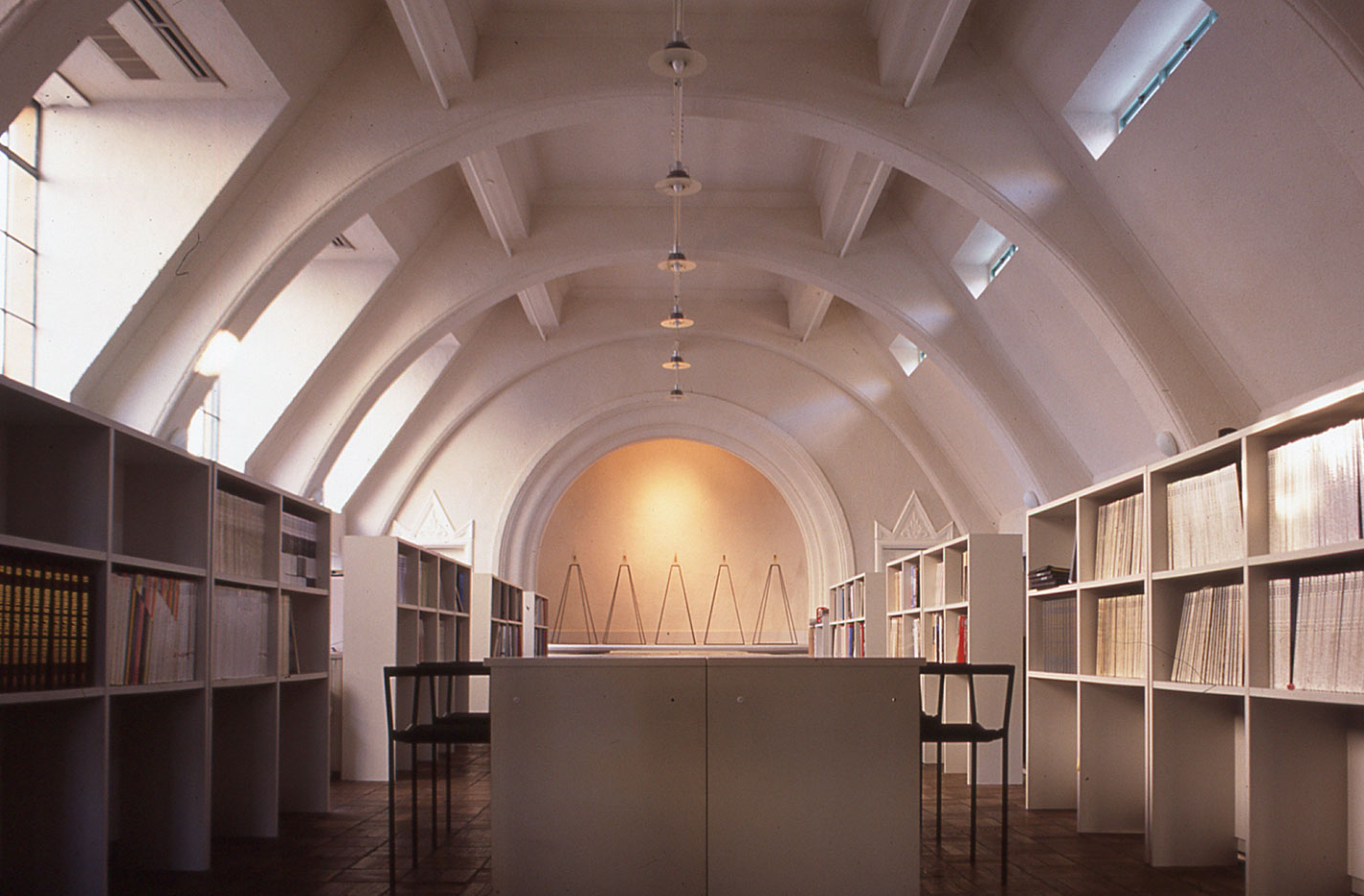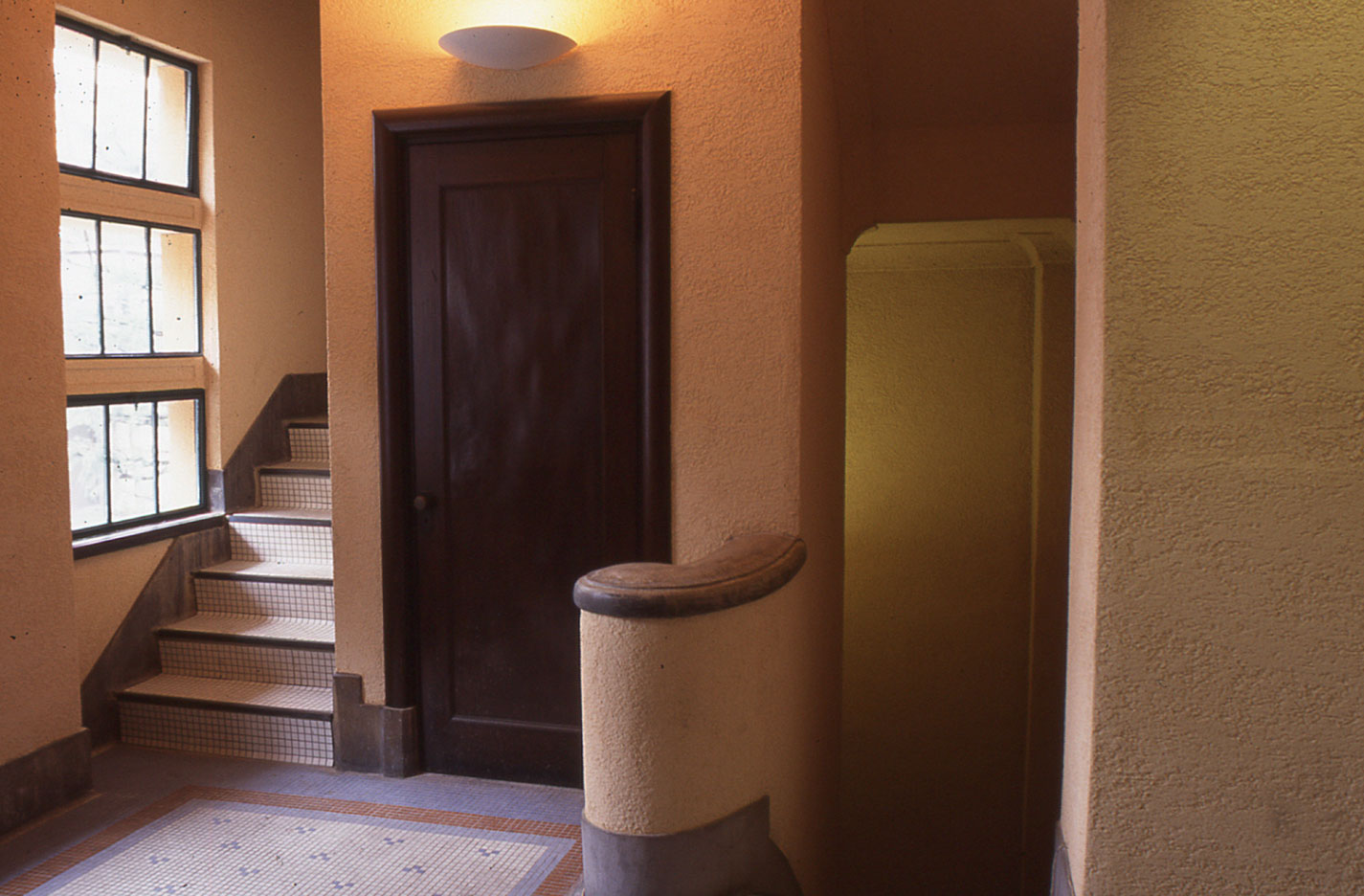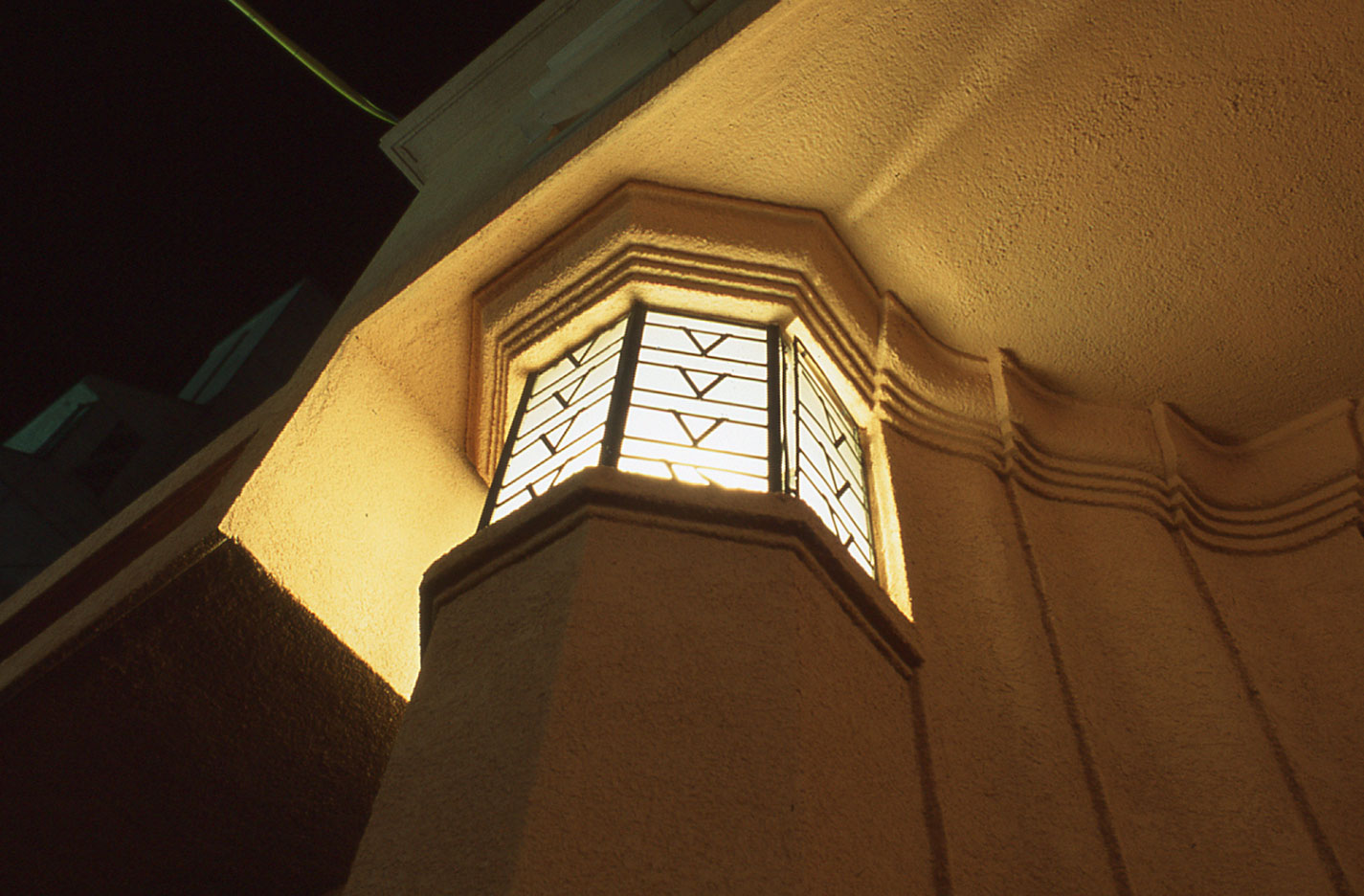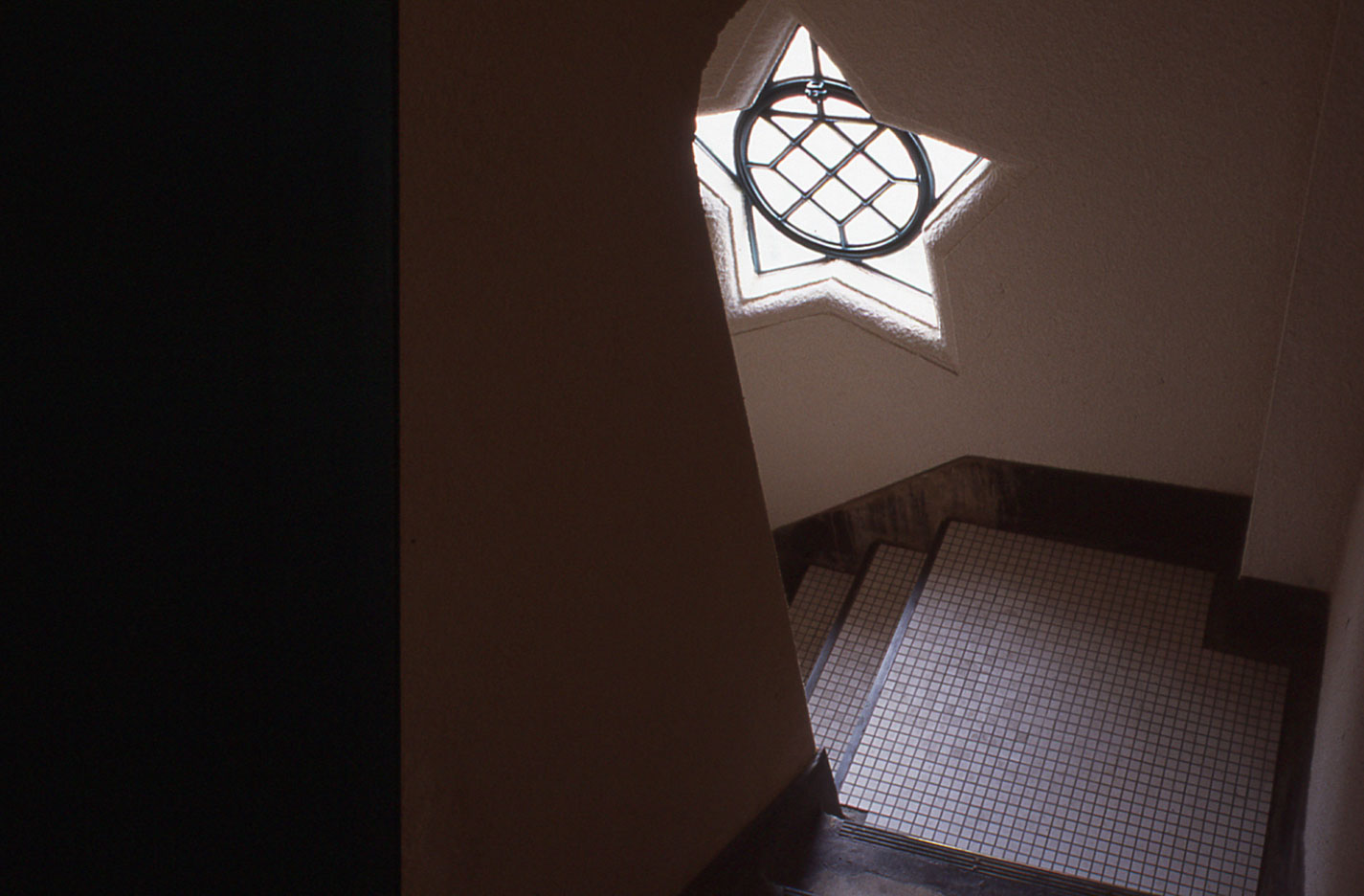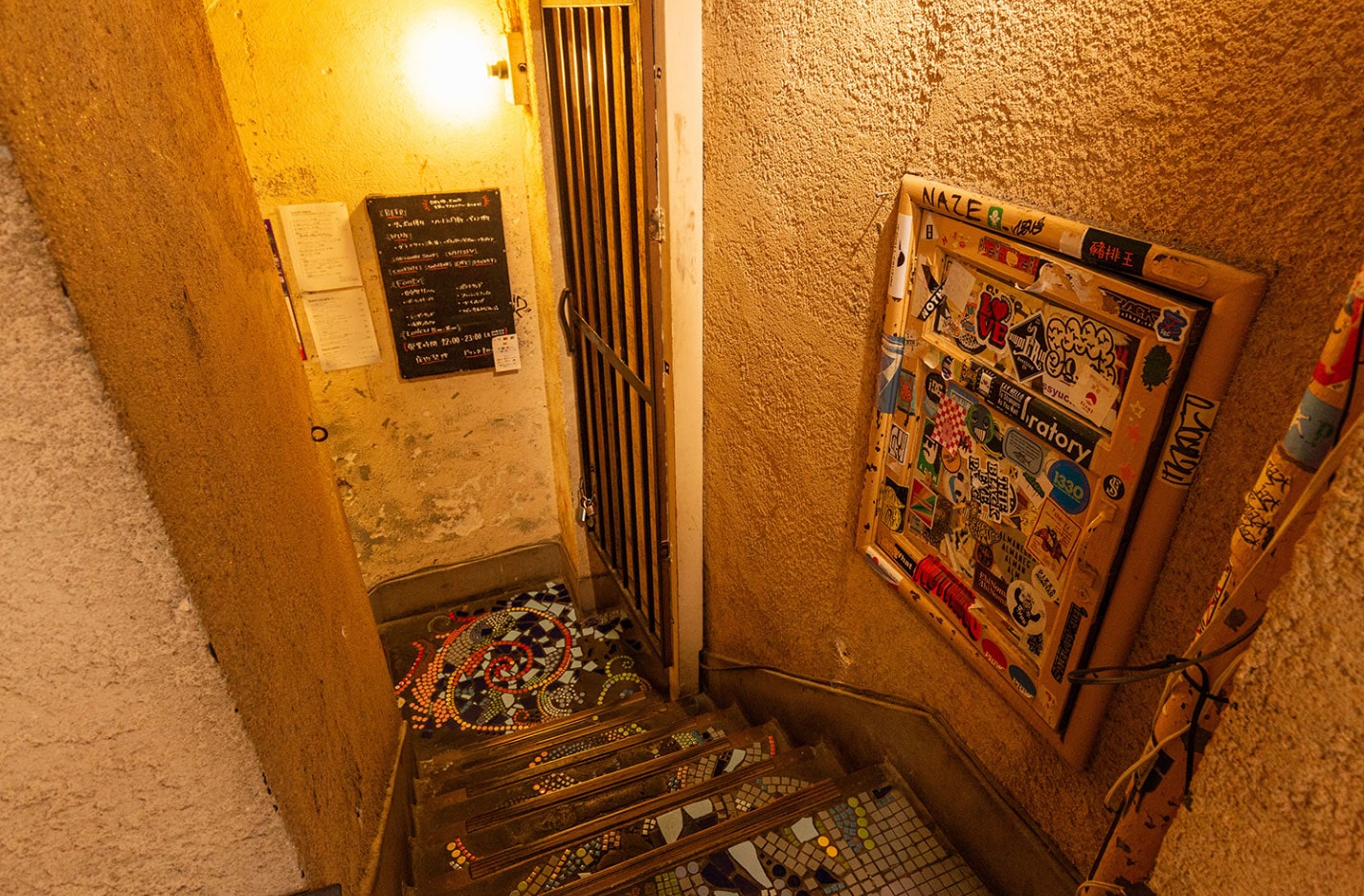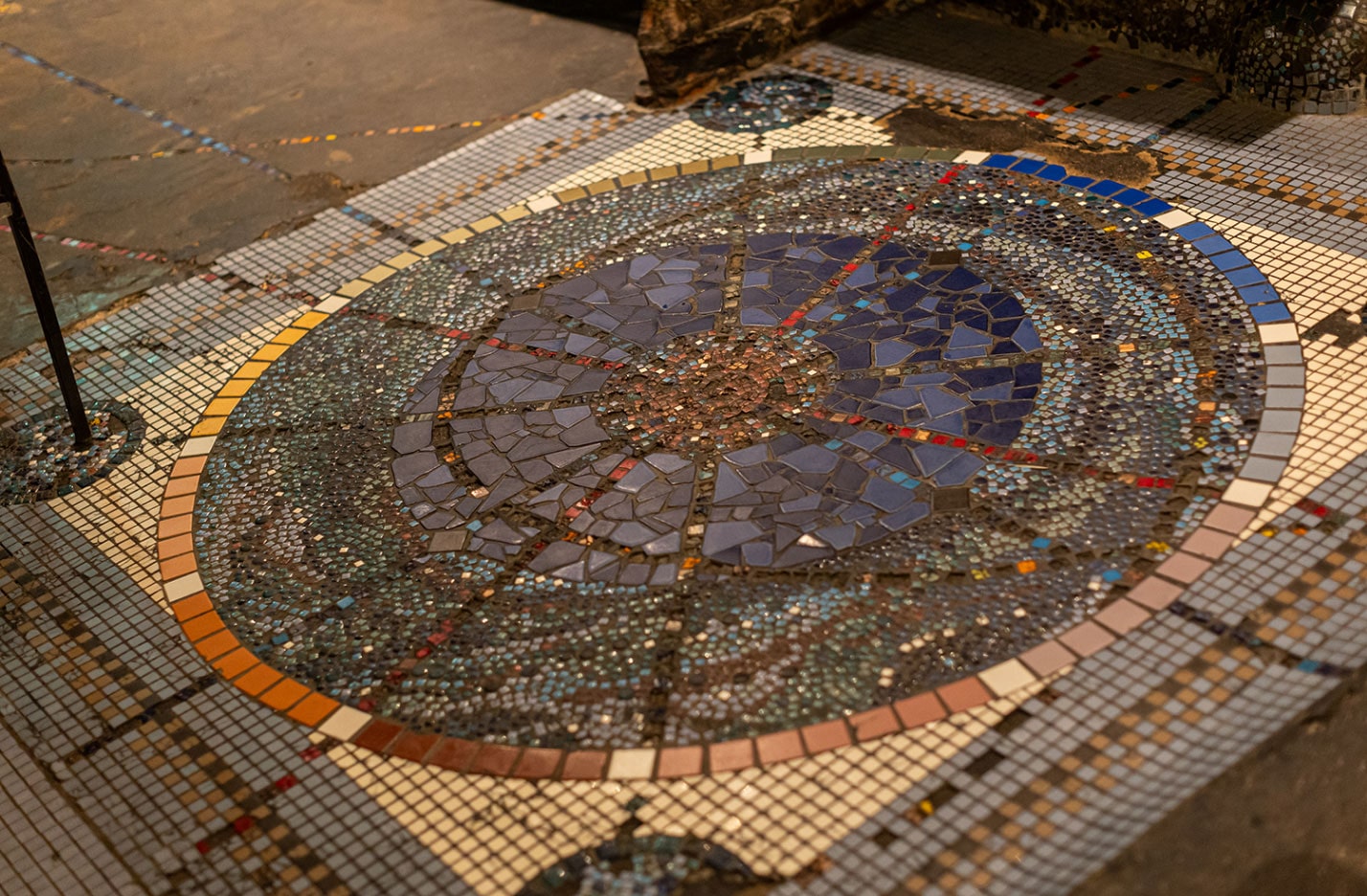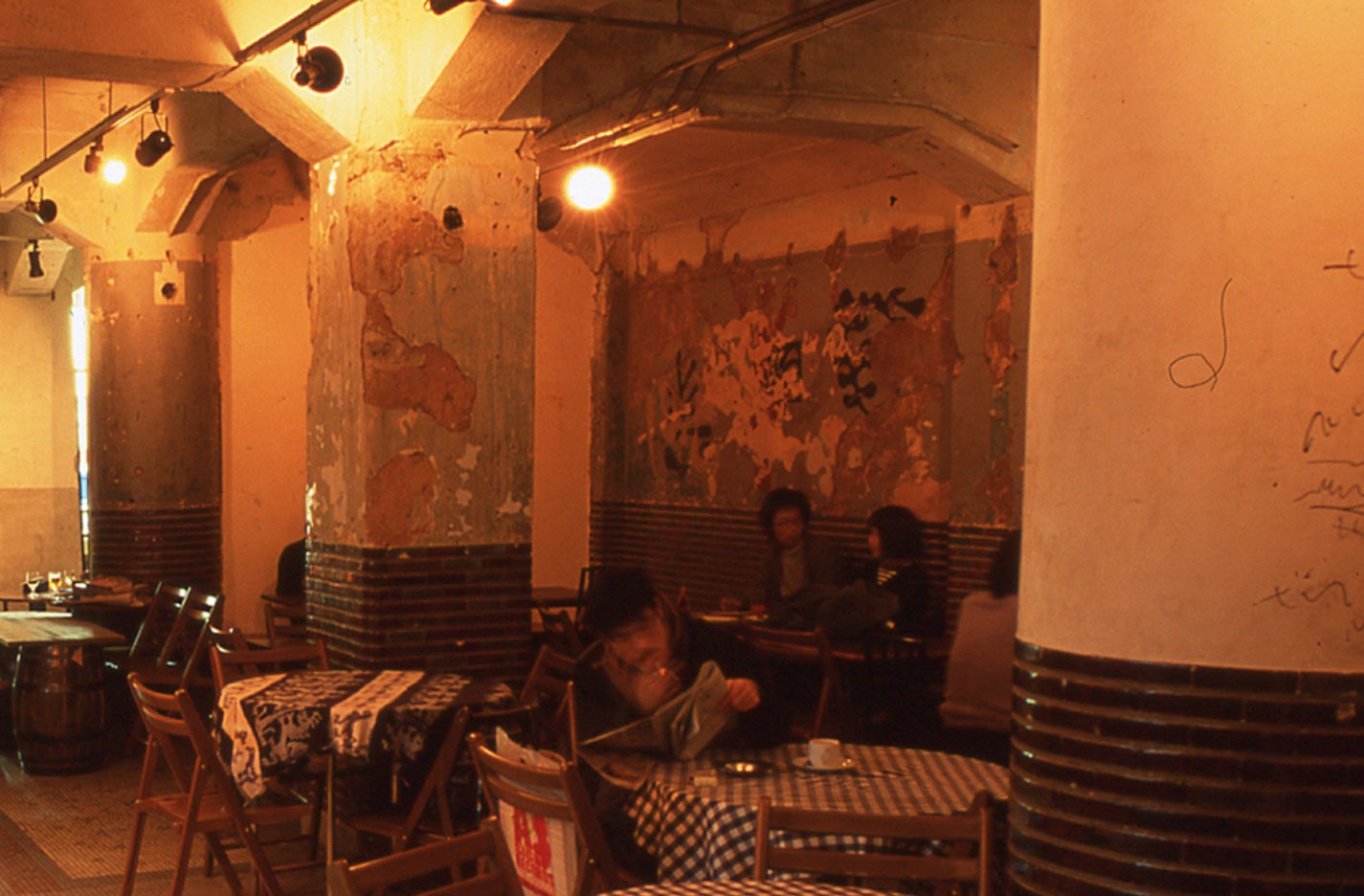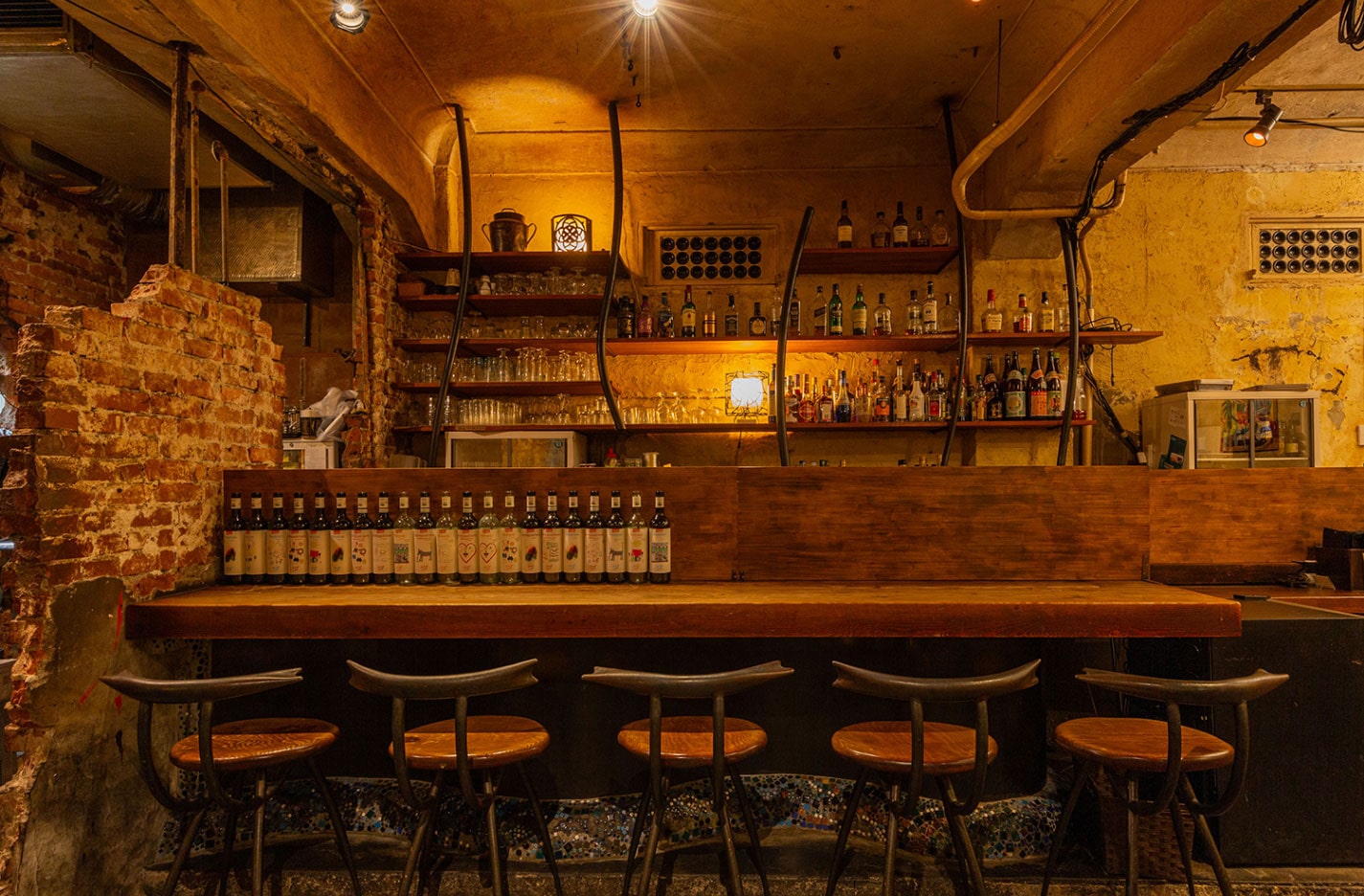
当店と1928ビルの歴史
INDÉPENDANTS が入っている1928ビルは、昭和2年(1928年)、建築家武田五一の設計で毎日新聞社京都支局ビルとして建築され、現在は近代建築遺産として京都市登録有形文化財に指定されています。竣工から70年後の1998年、新聞社の移転に伴い文化的拠点としてリノベーションされ、「1928 ビル」と改称されました。
当店は、長年廃墟同然だった地階を多くのアーティストたちが創建当時の姿に復元、そこに新たな装いをまとって1998年6月に誕生しました。そして2019年11月からはINDÉPENDANTS (アンデパンダン)としてリニューアルオープンいたしました。
- 1928年竣工
- 毎日新聞社京都支局(旧京都大毎会館)
- 1983年6月
- 京都市登録有形文化財に登録
- 1996年11月
- 同時代ギャラリー グランドオープン
- 1998年6月
- Café Indépendantsオープン
- 1999年12月
- ビル名「1928ビル」に改称
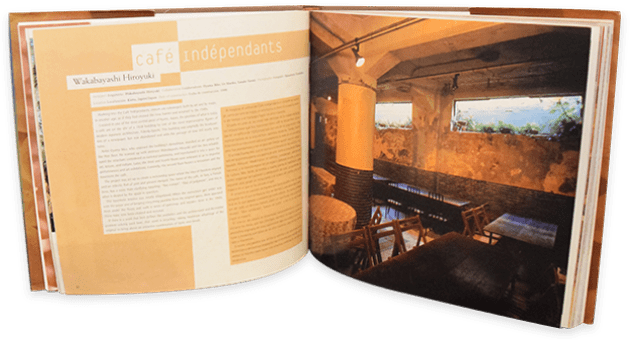
世界が注目する
INDÉPENDANTS
スペインで2002年に発刊された『Cafes – Designers & Design: Designer and Design Hardcover 』は、コーヒーの歴史と世界中のカフェを取り上げた一冊です。その中で、日本から唯一INDÉPENDANTS (アンデパンダン)が紹介されました。

アンデパンダンに足を踏み入れると、訪れる人は芸術と魔法によって、まるで時間の壁を越えて1940年代に戻ったかのような、別の時代に浸ることができる。
京都の中心街の一角にあるカフェの敷地は、日本の近代建築を代表する建築家の一人、武田五一が1928年に建てた建物にある。この建物はもともと新聞社の本社ビルだったが、時間の経過とともにほぼ廃墟と化していた。
取り壊しに反対した美術家の大山一行が1階にギャラリーを設置。彼は建築家の若林広幸と組み、国の重要文化財に指定されていたこの建物を改修し、芸術、娯楽、文化のための空間に生まれ変わらせた。その後、3階と4階がリニューアルされ、パフォーマンスや美術展が開催されるようになった。
このプロジェクトは、自由という理念のもと、過去と現在が融合した折衷的な雰囲気が漂う、居心地の良い空間を作るために立ち上げられた。このカフェの名前は、フランス語で「自由」、「自主」という非常に明確な意味がある。
地下室の内部はすっかり荒廃していた。元の空間から可能な限りのものを残すことを第一の目的として改装が進められると、床や壁の下から1940年代に描かれた一連の絵画やモザイク画が現れた。これらは現在、洗浄され修復されている。
ここでは美学と建築的・装飾的な問題を解決しオリジナルを最大限に活用して、時代と流行を魅力的に組み合わせているのである。
(原文)
Walking into the Café Indépendants, visitors are submerged, both by art and by magic, in another age, as if they had crossed the time barrier and returned to the 1940s.Located in one of the most central areas of Kyoto, Japan, the premises of what is today a café are on the site of a 1928 building by one of the most representative figures of modern Japanese architecture, Tekeda Goichi. This building was originally the headquar- ters of a newspaper, but was abandoned and with the passage of time fell nearly into ruins.
Artist Oyama Ikko, who opposed the building’s demolition, installed an art gallery on the first floor. He teamed up with architect Wakabayashi Hiroyuki and the two rehabili- tated the structure, considered as national patrimony, and transformed it into a space for art, leisure, and culture. Later, the third and fourth floors were renewed so as to organize performances and art exhibitions. Currently, the second floor houses a restaurant and the basement the café.
The project was set up to create a welcoming space where the idea of freedom reigned and an eclectic feel of past and present merged. The name of the café, in fact, a French term, has a more than clarifying meaning: “free exhibit”, “free of judgment”, and this is what is desired by the space in question.
The basement interior was totally dilapidated. When the conversion got under way, with the prime aim of keeping everything possible from the original space, there appeared from under the floors and walls a series of paintings and mosaics done in the 1940s. These have now been cleaned and restored,
If there is a word that best defines the aesthetics and the architectural and decorative problem-solving used here, that word is recycling: taking maximum advantage of the original to bring about an attractive combination of styles and trends.(引用元)Cafes – Designers & Design: Designer and Design Hardcover

1928ビルの魅力
時代を超えて感じる
「揺らぎ」の美しさ
1928ビルの魅力は、職人の手作りによる「揺らぎ」にあります。モルタルで塗られた手すり、手作業で作られた木枠の窓や格子窓は、現代の工業化された建築にはない温かみを持っています。特に吹きガラスの歪みが、建物に懐かしさとほっとする感覚を与え、建築そのものを活き活きと感じさせます。この揺らぎこそが、1928ビルを貴重な存在にしているのです。
時代が刻まれた地下空間
1928ビルの地下には、創建当時の壁画が残されています。進駐軍に占拠されていた時代、この地下空間はバーやダンスホールとして使われていました。壁画には、アメリカ兵が残したと思われる落書きも見受けられます。また、竣工当時のままのタイルが貼られており、重層的な歴史の痕跡がそのまま保存されています。そのままの姿で残すことで、一層の魅力を放っています。
歴史の響きを
未来に伝える
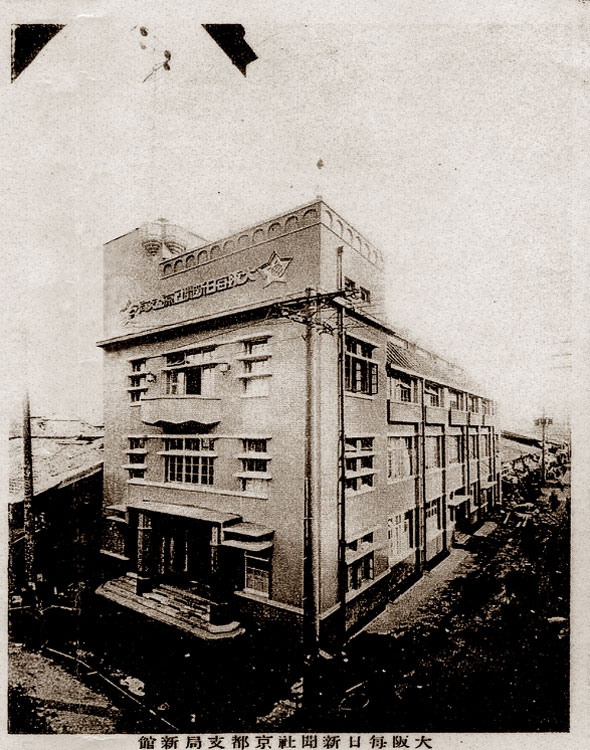
1928ビルはその歴史と魅力を今に伝えながら、未来へと続く物語を紡いでいます。重層的に積み重なった歴史の痕跡は、訪れる人々に温かみと懐かしさを提供します。この貴重な建物を守り続けることは、過去の文化と技術を未来へと継承することです。私たちは、この美しい空間を大切にし、次世代へと伝える努力を惜しみません。ぜひ、1928ビルに足を運び、その歴史と魅力を体感してください。





